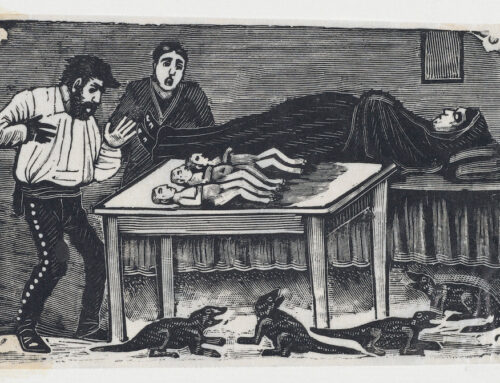So why am I calling this a “Smolenyak Classic”? Well, it dawned on me recently that I have written hundreds, if not thousands, of articles and blog posts over the years, and the Internet being what it is, some of them are still out there, while others aren’t. I had been toying with the idea of re-posting some of them as Classics, and received the final nudge I needed in the form of an email from a fellow working on a book about Knute Rockne. He could find a reference to one of my articles, but not the article itself. So here it is — the first of my “classics.” This one first appeared in April 2004, and while much has changed, it’s remarkable how much is still relevant.
Last month, I had the pleasure of attending the annual Ellis Island Family Heritage Awards where they honor Ellis Island immigrants and their descendants. This year’s ceremony paid tribute to Martin Scorsese, Paul Tagliabue, Knute Rockne, Robert Rubin, and Dr. Harold Varmus – and under the new “Peopling of America Award” (for immigrants who came through other ports) – I.M. Pei.
Where’s Knute?
Honorees are presented an elaborately framed copy of their ancestor’s passenger arrival record, and while I was at the event, I learned that the manifest that included famed football coach, Knute Rockne, had been particularly difficult to find. He had apparently come to the U.S. from Norway as a youngster, but his name – like those of many of our ancestors – had been a difficult one to locate.
Always up for a challenge, I decided to have a go at finding the record myself, and I discovered that he was indeed remarkably well-hidden in the database. In fact, his situation involved several of the unexpected twists that can occur in the Ellis Island database (EIDB), so I decided to share my search tactics to illustrate how to ferret out your more elusive ancestors.
Data Gathering
Before attempting a search in the database itself, I wanted to equip myself with a few details, so I began by surfing the Internet using google. By doing so, I learned that:
- the original form of Rockne was Rokne
- Knute was an Americanized version of Knut
- Knute had come here in roughly 1893 with his mother
- he was from Voss, Norway
- he was about five years old when he came
- his father, Lars, had come in 1891 in preparation for the 1893 Chicago World’s Fair and sent for his family after
- the family had settled in Chicago
This initial scouting was the equivalent of talking with older relatives, had I been researching my own ancestors. I had a lot to start with, but hoping to squeeze out a few more bits and pieces of data, I decided to search for the family in census records. It took a little effort, but by focusing on Chicago and playing with variations of first and last names, ages, and other details, I found them in the 1900, 1910, 1920 and 1930 census records. From inspecting these images, I was able to learn that:
- Knute’s father, Lars, went by the name Louis in the U.S.
- his mother’s name was Martha and she was born around 1859
- he had a sister Annie who was born around 1884 in Norway
I was also able to confirm the arrival year of 1893 as this was the date consistently given in these records. To see them for yourself, just search on “Louis Rokne” at Genealogy.com (for the 1900 and 1910) and “Martha Rockne” at Ancestry.com (for the 1920 and 1930).
Database Diving
With all this information assembled, it was time to go to the EIDB. Recognizing that I was dealing with a lot of variables – not the least of which was that Scandinavian names come in both farm and patronymic varieties – I decided to use Steve Morse’s search forms (www.stevemorse.org). I chose his short form (gray) form because I find it to be the most helpful for names that are prone to misspelling (2013 note: I use his gold form for almost all searches now). And since Knut is one of those names that seems to confound many databases, I opted to center my efforts on his mother, Martha. While I could have played with any combination of selection criteria, I made my first attempt with this trio:
- first name starts with or is: Mart (I wanted to be sure to find her even if she had come as the old country version of Marta)
- town names starts with or is: Voss
- year of arrival is between: 1893-1893
Up popped two hits, one of which was for Martha Pedersen Rohne, age 34, with a residence of Vosservanger. The age was right and I could easily see Rokne being interpreted as Rohne, so this sounded very promising. I clicked on the “scanned manifest” option, but couldn’t find Martha on the manifest that appeared. I realized then that I was dealing with a mislinked image. Having encountered this situation before, I knew that the image was probably in the EIDB, but that I would have to do a little more work to locate it. I began by noting a couple of details from the text information above the image: the May 30, 1893 arrival date and line number 597.
Missing Manifests
Armed with these bits of data, I returned to Steve Morse’s site and chose his missing manifests form, designed for just these situations. Toward the left of the screen, I entered the date I had just copied and hit the “display” button. This brought me to the opening page of the microfilm that contains the arrivals for May 27-June 5, 1893.
Doing a little mental math, I realized that I was looking for a ship that had arrived about four days into this ten-day period – or about 40% of the way through the roll. Of course, this was only an approximation as many ships could have arrived on one day and only one or two on others, but I used this as a rough estimate of how far to jump into the roll. On the right of the screen, I could see that there were a total of 717 frames (essentially the same as pages), so I calculated 40% of 717 and went directly to page 286 by entering that number in the field called “frame” near the center of the screen.
286 proved to be the first page for a ship that arrived on May 31st, so I knew I had gone too far. I went back to page 250 and noticed I was looking at distinctly Scandinavian names, so I thought I might be in the right neighborhood. Inspecting the left-hand column, I saw that the page contained listings for 216-272. I knew from a few minutes earlier when I had scribbled down details from the text data in the EIDB that the record I wanted was on line 597, so I used the +1 navigation key to move forward through the pages. My anticipation increased as I arrived at page 257 and scanned down for line 597.
There she was: Martha Pedersen Rohne (and yes, it looked like Rohne). Better yet, she was traveling with Anna Larsdatter Rohne (age 8) and Knud Larsen Rohne (age 4). The names and ages all fit, Anna and “Knud” were the children of a Lars, and their intended destination was Illinois. I knew I had the right family.
Where There’s a Will . . .
Looking at the record, I wondered why had Knute been so difficult to locate. After all, “Knud Rokne” isn’t that far off from the actual Knut Rokne. Playing with possibilities, I discovered that the transcriber had missed the ditto marks under Rohne in the mother’s name, so the future football coach had been hiding under the name of Knud Larsen. Had you thought to look under that name, there were 95 candidates to explore. Even then, when you picked the right one and clicked to see the manifest, you would have been taken to the arrival for a different ship. Fortunately, even with obstacles like these, there’s almost always a way to find your ancestors in this amazing database, so if Grandpa has eluded you so far, I hope you’ll give it another try!





This is really fascinating! Thanks for sharing!